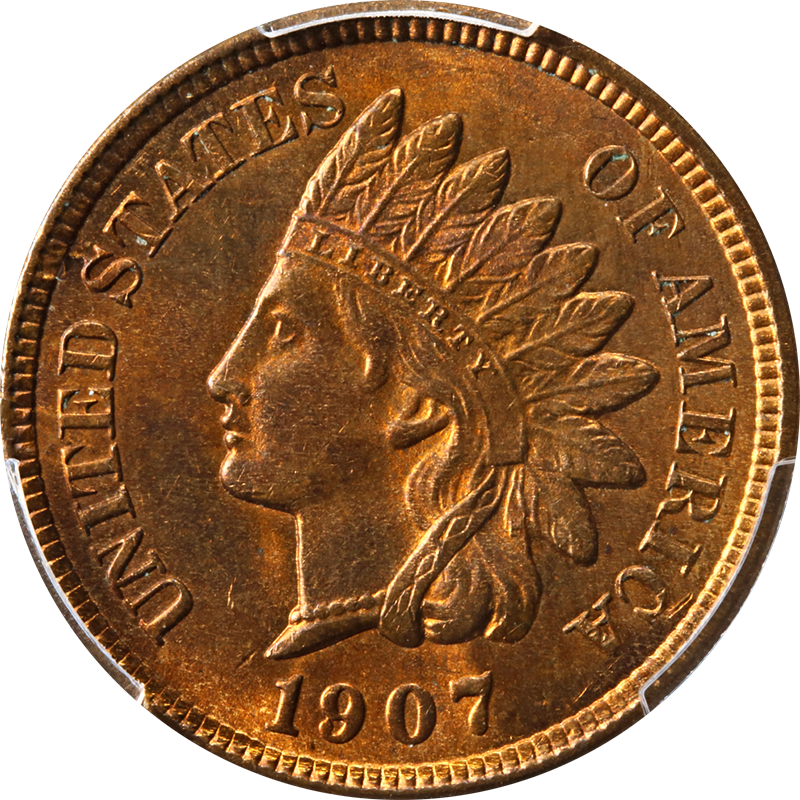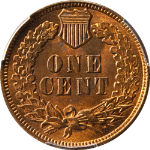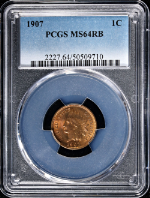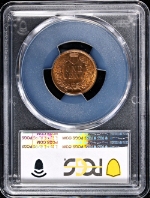Your shopping cart is currently empty. Please choose from one of our categories to start shopping!
1907 Indian Cent PCGS MS64RB Great Eye Appeal Strong Strike Fantastic Luster
SKU: PSB55667
1 in stock
| Check by mail | Credit Card/PayPal |
|---|---|
| $162.00 | $166.00 |
This original 1907 Indian Cent has great eye appeal with fantastic luster and strong strike. Great color and surfaces. Far more red than brown. Certified: PCGS MS64RB
Indian Cent
1859–1909
The Indian Cent, also known as the Indian Head Penny, began production just before the Civil War and continued to be minted for the next fifty years. It was preceded by the short-lived Flying Eagle Penny and was replaced by the current Lincoln Penny.
The Indian Cent is the same size as the modern penny, but prior to 1858, most one cent coins were much larger. Due to the rising cost of copper, copper coins were becoming more expensive to produce. To combat this issue, the U.S. Mint discontinued half-cent coins and reduced the size and weight of the penny. The first small one cent coin, the Flying Eagle Penny, was only minted for three years due to issues with production. By 1859, the U.S. Mint had begun striking the Indian Cent, designed by the fourth U.S. Mint Chief Engraver, James Longacre.
The obverse of the Indian Cent features Lady Liberty wearing a traditional Native American headdress. Around the headdress is a band with the inscription, “LIBERTY.” Encircling Liberty’s head, “UNITED STATES OF AMERICA” is inscribed. Below Liberty’s neck, the minting date is inscribed. At the time, and even still today, the design drew criticism because of the depiction of a Caucasian woman wearing a traditional Native American artifact.
The Indian Cent’s reverse has always had a simple design, although it was slightly changed in 1860. The original design features a wreath tied in a bow at the bottom, with “ONE CENT” inscribed in the center. After 1860, a presidential seal was added to the top of the wreath. The mint mark for coins minted in San Francisco — represented with “S” — can be found below the wreath.
Over its fifty years of production, the Indian Cent had two different metal alloy compositions. From 1859 to 1864, a copper-nickel alloy was used, resulting in slightly thicker and lighter colored pennies. From 1864 to 1909, the pennies were 95% copper, resulting in a darker shade. Because 1864 was a transition year, there were pennies minted from that year with both compositions. Both versions are sought after by numismatists. Key dates include 1864-L, 1869, 1872, 1877, 1908-S, and 1909-S.
Specifications
Weight: 4.67 grams (1859–1864); 3.11 grams (1864–1909)
Composition: 88% Copper, 12% Nickel (1859–1864); 95% Copper, 5% Tin/Zinc (1864–1909)
Diameter: 19.05 mm
Edge: Plain
Mints: Philadelphia, San Francisco




